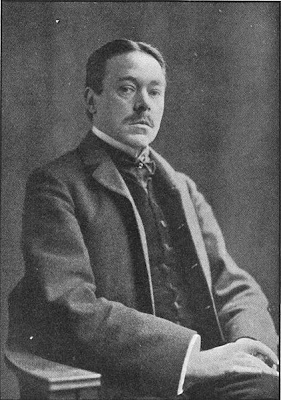 |
If you don't... Well, I thought I'd post a few translations here. Nothing fancy; no rhymes or anything, just the basic meaning so you can compare them to their English and American counterparts.
I thought I'd start with a particularly gruesome one called Där tjänte en flicka (There served a girl). It was recorded a few years ago by Swedish artist Louise Hoffsten. Her version is quite good, but it doesn't contain all the verses – only 1-3, 5 and 9-10. It's a pity in my opinion since that leaves out some of the more horrid ones. Anyway, if you have Spotify, you can listen to it here.
I put the Swedish lyrics first and then the English translation right after each verse.And, like I said, it's not a fancy translation, but, I dare say, pretty accurate as far as content goes (but without any poetic flair like rhymes and rhythm).
And – gruesome and purple as this song is, contains at least a pinch of realism. Women being executed for infanticide is historical fact, not fancy.
1. Där tjänte en flicka i Växjö i två år,
hon tjänte hos en köpman, en ungkarl det var,
det var väl ett stort under, att hon torde
en sådan gärning göra, som hon gjorde.
1. There served a girl in Växjö for two years,
she was maid to a merchant, a bachelor too,
but it was a mystery how she dared
to do the deed she did
2. Det hände sig så om en lördagskväll,
hon födde två foster, dem mördade hon själv;
hon trodde, där var ingen, som såg det,
och därför tog hon livet utav dem.
3. It happened on one Saturday night
that she bore two children, she murdered them herself
she thought there was no one who saw it
and so she took their sweet lives.
3. Så svepte hon dem uti renaste lin,
så kastade hon dem i den skarpaste ström;
hon trodde, där var ingen som såg det,
och därför tog hon livet utav dem.
3. She wrapped them in linen
and cast them into a stream
she thought there was no one who saw it
and so she took their sweet lives.
4. Sen gångar hon sig på kyrkogården in,
och tårarne runno så stritt på hennes kind.
Ja, det var väl ett stort under, att hon torde
en sådan gärning göra, som hon gjorde,
4. Into the graveyard she went
and tears ran down her cheeks.
Yes, it was a mystery how she dared
to do the deed she did
5. "Men ett det är, som grämjer mitt hjärta allra mest,
att min allra yngste broder har mig i bojor fäst;
han fängslar och binder mig så svåra.
Gud nåde mig, syndare arma!
5. "But what grieves my heart the most,
is that my youngest brother has clasped me in irons,
he traps me and binds me so badly.
God have mercy on me, wretched sinner!"
6. Min moder lät stöpa en silverkanna ny,
med fyra förgyllande fötter däruti,
den fyllde hon med blanka riksdalrar,
hon ville själv med konungen samtala
6. My mother had made a silver jar
with four golden feet inside;
filling it with shiny shillings,
with the king she wanted plead
7. för att lösa mitt unga liv, om hon det kunde få.
Men mitt ungaste liv, det passar jag ej på:
när jag för mina synder haver lidit,
så hoppas jag, de äro mig tillgivna.
7. for my young life, if she could
but for my life I have no care;
once I have paid for my sins
I hope they are forgiven
8. I morgon så fyller jag mitt adertonde år,
då hade jag tänkt, att mitt bröllop skulle stå;
men då skall röda hjärteblodet rinna,
likt vatten uti stridaste strömmar."
8. Tomorrow I will turn eighteen,
when I had thought to be a bride
but instead the red blood of my heart
shall stream
in torrents like water."
9. Den andra dagen ’fördes hon till spetsgården fram.
Och fram kommer bödeln med yxan i sin hand:
"Si, här skall detta unga liv iörrinna,
liksom det vore blodröda strömmar!"
9. She was brought to the scaffold on the second day
and with an axe the executioner stands:
"See, this young life shall run
in blood red torrents like water!"
10. Så talte hon till folket, som däromkring stod:
"Ack, hör I, unga flickor, jag råder eder till,
låten inga falska gossar er behaga,
ty då fån I sorg i alla edra dagar!"
10. She spoke to the people who stood all around:
"Oh, hear me, girls, I shall offer you advice,
trust not young men, fair and false,
lest you shall grieve for all your days!"
*Picture from The Graphics Fairy . It has nothing to do with the song besides looking rather dramatic.







.jpg)






















